Fibulin-3 promotes osteosarcoma invasion and metastasis by inducing epithelial to mesenchymal transition and activating the Wnt/β-catenin signaling pathway
- PMID: 28740094
- PMCID: PMC5524709
- DOI: 10.1038/s41598-017-06353-2
Fibulin-3 promotes osteosarcoma invasion and metastasis by inducing epithelial to mesenchymal transition and activating the Wnt/β-catenin signaling pathway
Retraction in
-
Retraction Note: Fibulin-3 promotes osteosarcoma invasion and metastasis by inducing epithelial to mesenchymal transition and activating the Wnt/β-catenin signaling pathway.Sci Rep. 2023 Jul 19;13(1):11641. doi: 10.1038/s41598-023-38918-9. Sci Rep. 2023. PMID: 37468568 Free PMC article. No abstract available.
Abstract
This study explored the role of fibulin-3 in osteosarcoma progression and the possible signaling pathway involved. Fibulin-3 mRNA and protein expression in normal tissue, benign fibrous dysplasia, osteosarcoma, osteosarcoma cell lines (HOS and U-2OS), the normal osteoblastic cell line hFOB, and different invasive subclones was evaluated by immunohistochemistry (IHC) or immunocytochemistry (ICC) and real time reverse transcriptase-polymerase chain reaction (real time qRT-PCR). To assess the role of fibulin-3 in the invasion and metastasis of osteosarcoma cells, lentiviral vectors with fibulin-3 small hairpin RNA (shRNA) and pLVX-fibulin-3 were constructed and used to infect the highly invasive and low invasive subclones. The effects of fibulin-3 knockdown and upregulation on the biological behavior of osteosarcoma cells were investigated by functional in vitro and in vivo assays. The results revealed that fibulin-3 expression was upregulated in osteosarcoma, and was positively correlated with low differentiation, lymph node metastasis, and poor prognosis. Fibulin-3 could promote osteosarcoma cell invasion and metastasis by inducing EMT and activating the Wnt/β-catenin signaling pathway. Collectively, our findings demonstrate that fibulin-3 is a promoter of osteosarcoma development and progression, and suggest a novel therapeutic target for future studies.
Conflict of interest statement
The authors declare that they have no competing interests.
Figures
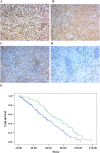

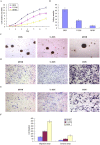
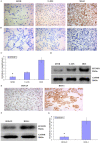
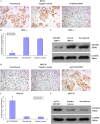
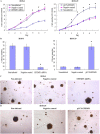
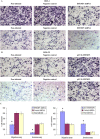
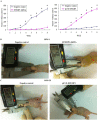


Similar articles
-
Fibulin-4 promotes osteosarcoma invasion and metastasis by inducing epithelial to mesenchymal transition via the PI3K/Akt/mTOR pathway.Int J Oncol. 2017 May;50(5):1513-1530. doi: 10.3892/ijo.2017.3921. Epub 2017 Mar 21. Int J Oncol. 2017. PMID: 28339091 Free PMC article.
-
Fibulin-4 is associated with prognosis of endometrial cancer patients and inhibits cancer cell invasion and metastasis via Wnt/β-catenin signaling pathway.Oncotarget. 2017 Mar 21;8(12):18991-19012. doi: 10.18632/oncotarget.15086. Oncotarget. 2017. PMID: 28177909 Free PMC article.
-
SPARCL1 suppresses osteosarcoma metastasis and recruits macrophages by activation of canonical WNT/β-catenin signaling through stabilization of the WNT-receptor complex.Oncogene. 2018 Feb 22;37(8):1049-1061. doi: 10.1038/onc.2017.403. Epub 2017 Oct 30. Oncogene. 2018. PMID: 29084211 Free PMC article.
-
Fibulin-3 suppresses Wnt/β-catenin signaling and lung cancer invasion.Carcinogenesis. 2014 Aug;35(8):1707-16. doi: 10.1093/carcin/bgu023. Epub 2014 Jan 30. Carcinogenesis. 2014. PMID: 24480807 Free PMC article.
-
Alteration in the Expression of Circular Rnas and its association with the Development and Progression of Osteosarcoma, an Integrative Review with High Sensitivity Research.Asian Pac J Cancer Prev. 2024 Apr 1;25(4):1195-1203. doi: 10.31557/APJCP.2024.25.4.1195. Asian Pac J Cancer Prev. 2024. PMID: 38679978 Free PMC article. Review.
Cited by
-
Hypoxia-Induced miR-378a-3p Inhibits Osteosarcoma Invasion and Epithelial-to-Mesenchymal Transition via BYSL Regulation.Front Genet. 2022 Jan 28;12:804952. doi: 10.3389/fgene.2021.804952. eCollection 2021. Front Genet. 2022. PMID: 35154253 Free PMC article.
-
Role of Fibulins in Embryonic Stage Development and Their Involvement in Various Diseases.Biomolecules. 2021 May 2;11(5):685. doi: 10.3390/biom11050685. Biomolecules. 2021. PMID: 34063320 Free PMC article. Review.
-
Novel Associations Within the Tumor Microenvironment: Fibulins Meet ADAMTSs.Front Oncol. 2019 Aug 22;9:796. doi: 10.3389/fonc.2019.00796. eCollection 2019. Front Oncol. 2019. PMID: 31508361 Free PMC article. Review.
-
Chalcone Derivatives 4'-Amino-1-Naphthyl-Chalcone (D14) and 4'-Amino-4-Methyl-1-Naphthyl-Chalcone (D15) Suppress Migration and Invasion of Osteosarcoma Cells Mediated by p53 Regulating EMT-Related Genes.Int J Mol Sci. 2018 Sep 19;19(9):2838. doi: 10.3390/ijms19092838. Int J Mol Sci. 2018. PMID: 30235848 Free PMC article.
-
Retraction Note: Fibulin-3 knockdown inhibits cervical cancer cell growth and metastasis in vitro and in vivo.Sci Rep. 2023 Jul 10;13(1):11162. doi: 10.1038/s41598-023-38389-y. Sci Rep. 2023. PMID: 37429930 Free PMC article. No abstract available.
References
-
- Geller DS, Gorlick R. Osteosarcoma: a review of diagnosis, management, and treatment strategies. Clin Adv Hematol Oncol. 2010;8(10):705–718. - PubMed
Publication types
MeSH terms
Substances
LinkOut - more resources
Full Text Sources
Other Literature Sources
Medical
Miscellaneous

